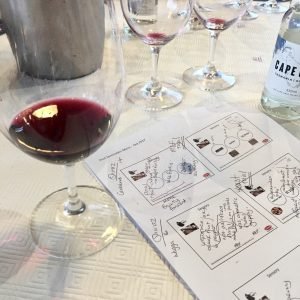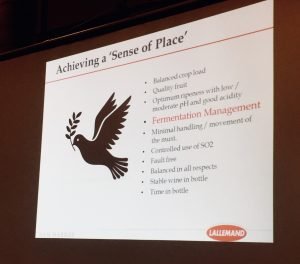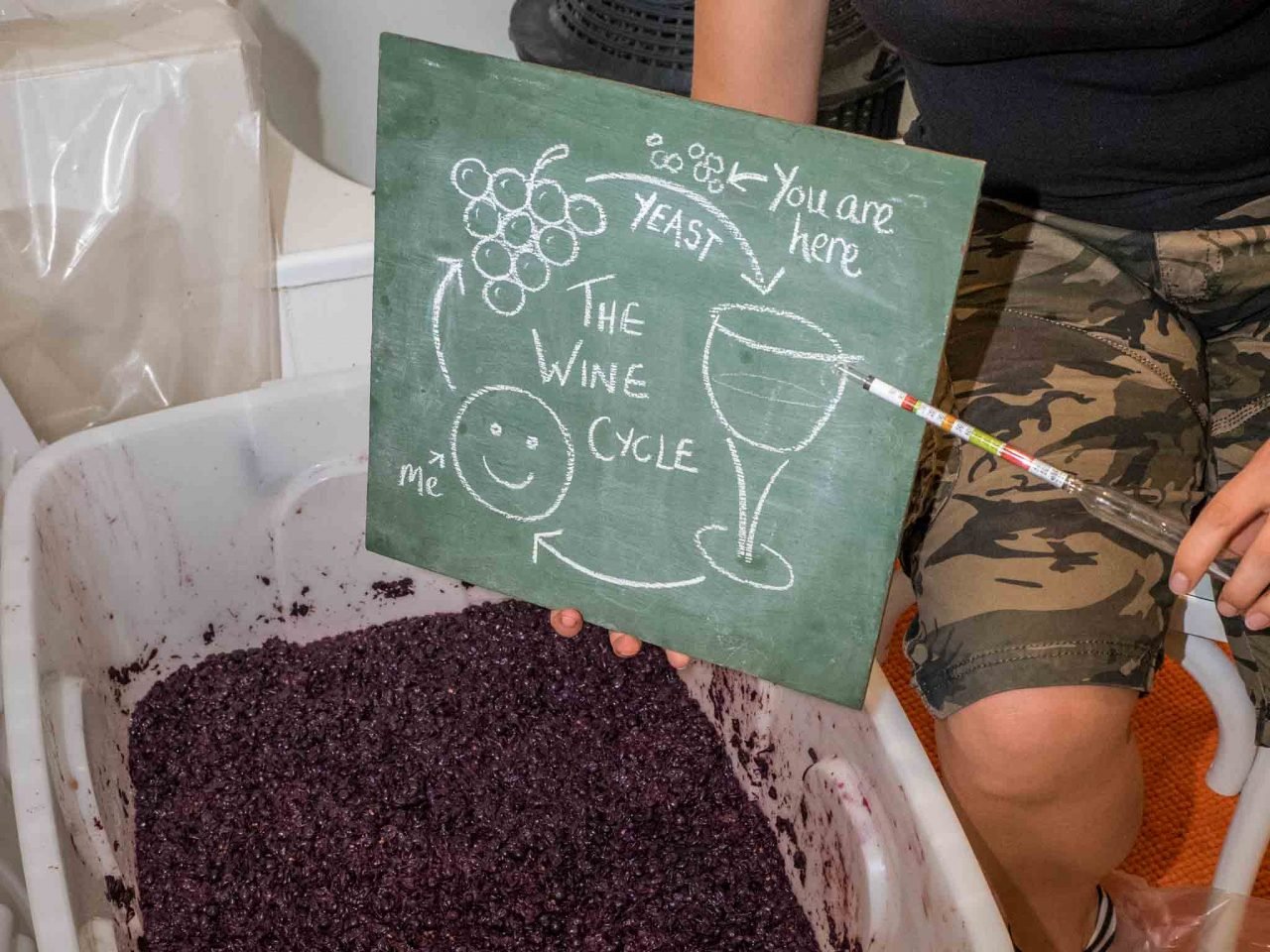
This week Andi and I attended a workshop called ‘Lifting the lid on fermentation’. It gave us some fascinating insights into what happened in our Teachers Pet ferment earlier in the year.
We allowed our ferment to start naturally, using the ‘natural’ yeast which was present in order to get things going. Part way through the ferment we found what we thought was a bacterial infestation in the must. It was also emitting some funky smells from the ferment. We hastily added some PMS to kill off the bacteria and inoculated with some cultured yeast to finish the ferment. We both breathed a sigh of relief when things were back on track within a day or two.
There is a big movement at the moment from wine consumers for ‘naturally’ fermented wines and this is what we were aiming for with our first batch (Adventurous!). However the finished product can be unpredictable and faults are often evident, as we discovered!
The reason for this is that there are lots of different bacteria and yeast which are active in the ferment. And all of them will have affected the ferment in some way.
3 main take-away lessons
All yeast are not created equal
Yeast is literally everywhere. There are many different types and not all of them are good for your ferment. Saccharomyces cerevisiae is the yeast that will finish the job as it is tolerant of higher levels of alchohol and most others will die off at around 4%. Up until that point, all of the yeast are munching away on the grape sugars and producing various chemicals. Not all of these chemicals have a desirable effect on the flavour profile of the wine!
Different strains of Saccharomyces cerevisiae can be used to enhance different flavour characteristics of the finished wine. Selecting a specific cultured yeast can enable the winemaker to produce a finished product in a particular style. Controlling populations of less desirable yeast and bacteria in the blend is important to ensure the flavours in the finished wine are as the winemaker intended.
Be like Sam

Sam Harrop (winemaking consultant with 20 years experience working with some of the best) put forward a very good case for making wine with a “Sense of place”. A wine which represents the vineyard it came from, not just a copy of every other wine in the region.
I love this philosophy. Selecting not just the grapes and yeast, but the winemaking processes that are used in order to produce a wine which reflects its source.
He painted a very romantic picture of him standing in the field with his vines absorbing the atmosphere and feel of the vineyard. Then based on the grapes that are grown each year, he chooses processes and ingredients to craft a wine that best reflects the vineyard it comes from.
An example is one of his rocky coastal vineyards. Sam likes to craft a wine with mineral and flint undertones to reflect where the grapes came from.
Play nice together
There are generally two main parts to fermentation. The primary ferment which uses yeast to convert sugars to alchohol and flavour chemicals. And Malolactic fermentation, whereby malolactic bacteria convert malic acid into lactic acid and a few other things. Malolactic fermentation makes the wine less acidic and gives it a buttery, rounded kind of flavour. It is most noticable in chardonnay wines though many producers are limiting the amount of Malo’ in their wines these days.
Tradtion has it that the main ferment happens first, followed by malolactic fermentation if required. However, the yeast and malolactic bacteria convert different parts of the grape must into different compounds. It is therefore possible to do both at the same time. There is evidence that this produces a wine that preserves the fruit flavours more, is less likely to produce acetic compounds (vinegar flavours) and is more stable in the bottle for long term storage. The downside is that its not easy to stop malolactic fermentation without stopping your primary ferment and vice versa. I’m excited to be trying this with at least one batch in next years vintage.
I’ve been concinved that in order to make high quality wines, we need to do it in a controlled and deliberate manner. I’m not 100% sure which winemaking ingredients and processes we will be using at this stage. However, in order to really craft our wine, we need to be in control of each stage in the process rather than the various random yeast and bacteria that like to get involved.

